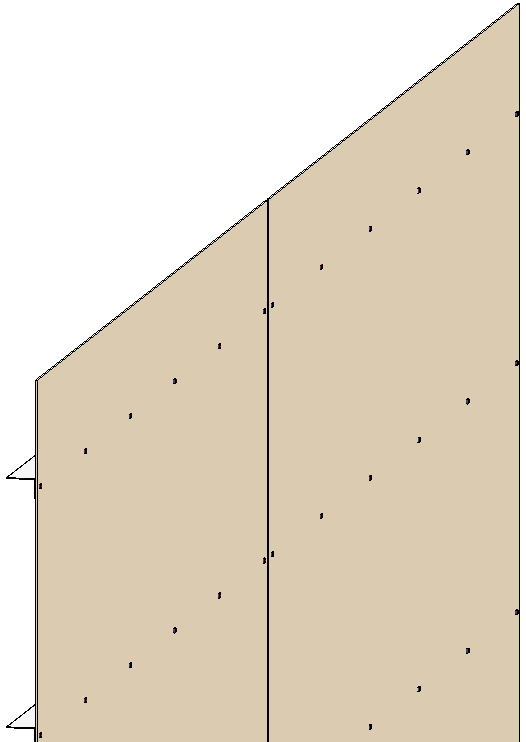Recalculate Feature
Recalculate
You use the Recalculate function to transfer all changes made in the feature log to the drawing.
The position of the insertion mark is taken into account
in recalculation, i.e. the recalculation is performed up to the insertion
mark. If you want the recalculation to be performed up to the end of the
feature log, regardless of the insertion mark, choose the Calculate to
the End function.
Changed features which have not yet been taken into account in recalculation are marked with an asterisk.
If you have chosen the Calculate feature directly after change setting in the feature configuration, the changes will be automatically applied to the drawing, and no recalculation will be required.
![]() Please note:
Please note:
Call the Recalculate function regularly, as this will enable you to check whether the feature model has saved the feature correctly and whether all parts and variants used are available.
If feature steps with element reference (point, line, hole) are changed, the log is automatically recalculated up to the feature step.
Calculate to end
This function performs the recalculation to the end of the feature log, regardless of the position of the insertion mark, which is automatically moved to the end of the log
Calculate to this feature
This function enables you to perform a recalculation up to the marked feature entry. The insertion mark is automatically placed behind the entry.
The prerequisite is for automatic recalculation to be deactivated in the feature configuration.
Calculate next feature
This function enables you to recalculate the feature log step by step.
![]() Please note:
Please note:
You can achieve the same effect if you move the insertion position and have activated automatic recalculation in the feature configuration.
Recalculation with updating of associated parts
A recalculation always affects only the currently selected part. However, there are also features that affect several parts. For example:
-
Divide along direction splits one part into several individual parts.
-
The connection of sub-structure and element installation depends on both features.
-
Steel Engineering connections also relate to two beams or profiles each.
In these cases, a change to a part always affects only the active part and does not affect the other, dependent parts: If you change the original part in the feature log for a divided part, this change initially affects only the active part. Similarly, a change to the profile installation has no effect on the connection with the element installation.
For these cases the function Recalculation with update of associated parts is available. This initially behaves like a normal Recalculation. However, all parts connected to the current component are also updated afterwards, which means that changes to the original part then also affect the connected parts.
Example 1:
A steel engineering beam was divided into four parts with the function Divide along direction.
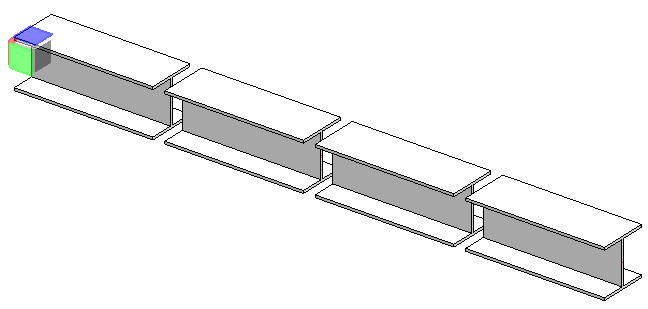
The feature log of the first part is now used to change the type of the first beam: This change only affects the selected part:
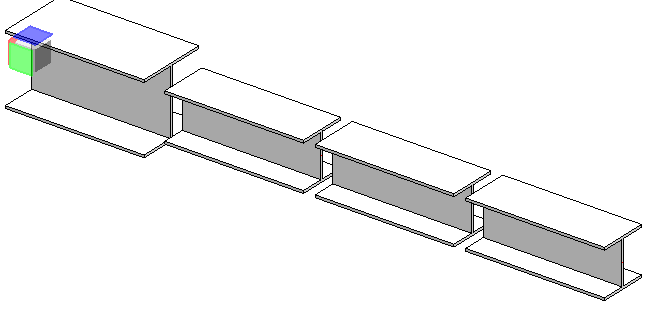
Only after selecting the function Recalculation with update of associated parts, the other parts also receive the changed beam type:
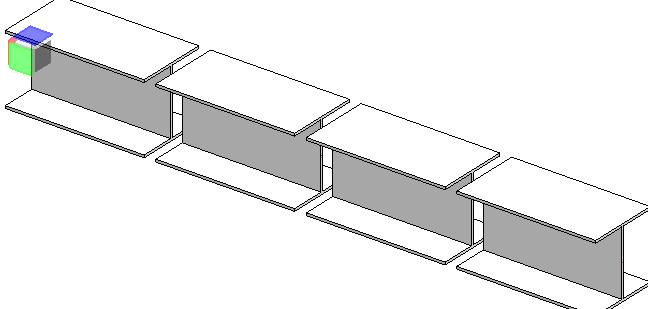
Example 2:
A connection consisting of an element installation with panels of the type ALUCOBOND, riveted and a sub-structure of Hilti MT-F profiles:
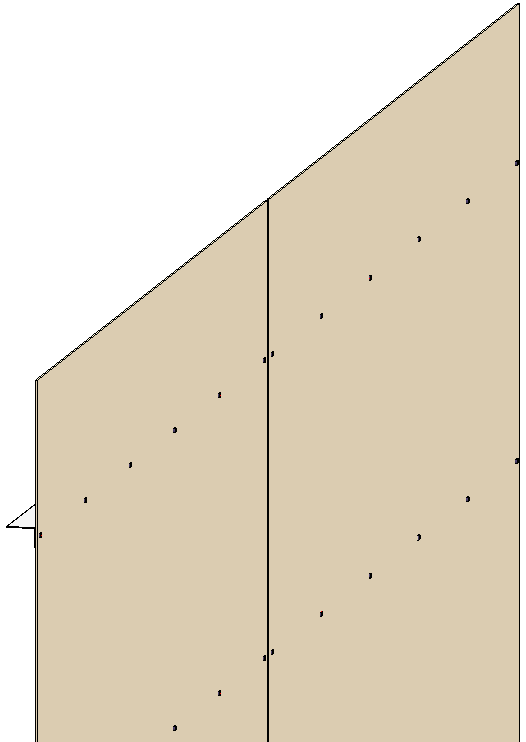
The sub-structure is changed so that the profiles now have smaller distances to each other. The rivets and bores in the element installation, which were created via the feature Connection, remain unaffected by this change and are still in the old, now still incorrect position:
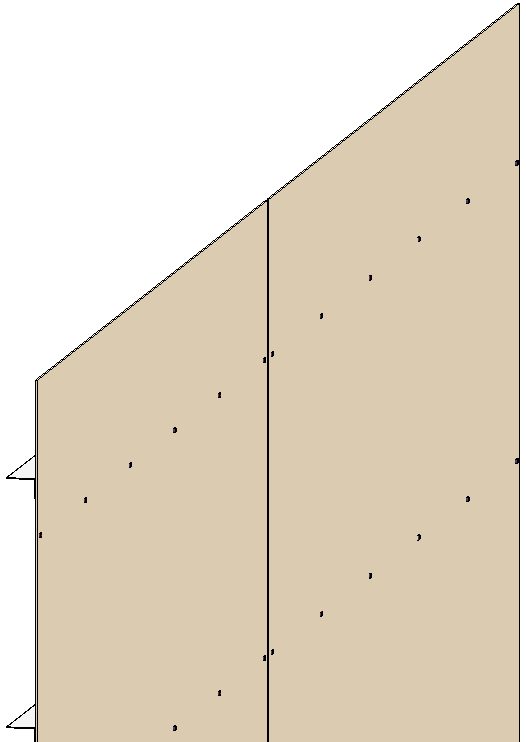
After calling up the function Recalculation with updating of associated parts, the rivets and bores are placed in the correct positions again:
